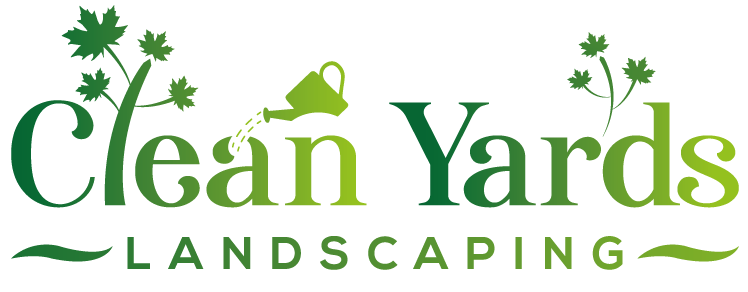Easy Russell Gardening: Ergonomic Tools for Clay Soil Now
Quick Takeaways:
- Russell's heavy clay soil can be tough, causing back strain.
- Ergonomic tools (long handles, good grips, leverage features) significantly reduce physical effort.
- Amend clay soil with organic matter (compost) for better structure, ideally in fall.
- Use proper body mechanics (bend knees, lift with legs) even with good tools.
- Raised beds offer an alternative to amending large clay areas.
Dreaming of a lush garden paradise right here in Russell? Facing tough clay soil? Don't let digging turn into a back-breaking chore! Learn how ergonomic tools and smart techniques make gardening in heavy soil easier. Ready for professional help? Request a quote today!
Introduction: Giving Clay Soil the Heave-Ho (Without the Heaving!) in Russell
Dreaming of a lush garden paradise right here in Russell? We get it! But sometimes, those beautiful landscaping visions crash into reality when your shovel meets our region's infamous heavy soil. If you're gardening anywhere around Ottawa, from Greely to Metcalfe, chances are you've wrestled with *clay soil*. You know the stuff – sticky goo when wet, rock-hard concrete when dry. Trying to dig a simple planting hole can feel less like gardening and more like an Olympic event, threatening to give *you* the heave-ho instead of the soil! It’s enough to make anyone sore. But don't despair! Giving that stubborn clay the boot (figuratively speaking!) doesn't have to break your back. There are smarter ways to work, better techniques, and even ergonomic tools designed to ease the strain. Let's explore how to make peace with your plot and get planting without the pain.
The Clay Conundrum: Understanding Ottawa's Soil (Especially in Russell & Neighbours)
Okay, let's dig into the dirt on dirt!
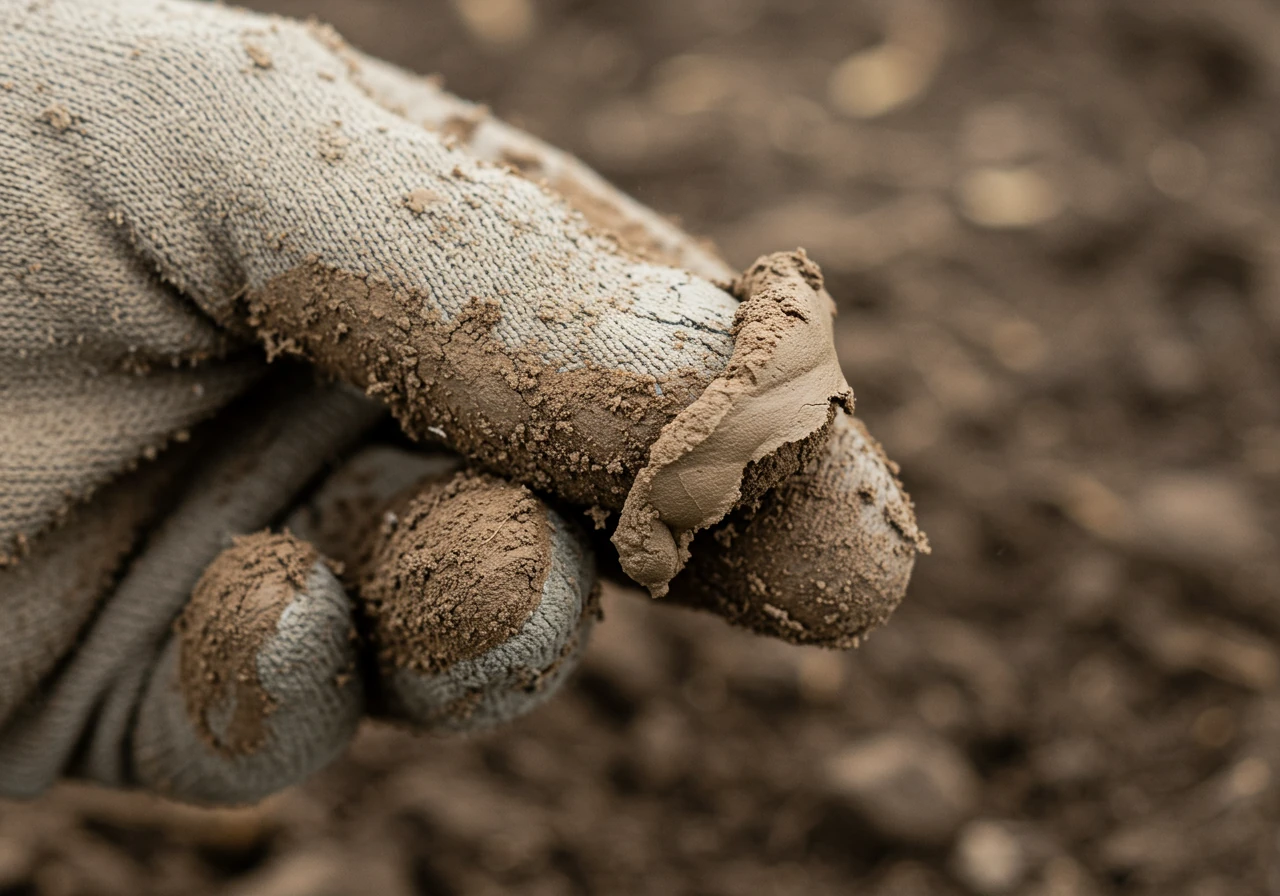
So, you're gardening or landscaping in Russell, or maybe nearby in Greely, Metcalfe, or Osgoode? Welcome to the club! You've likely encountered our region's *special* soil signature: clay. If your shovel sometimes feels like it's hitting pavement instead of earth, or if you've ever lost a boot to sticky mud, you know exactly what we mean. But what makes clay soil behave the way it does?
Imagine tiny, microscopic flat plates, all stacked tightly together. That's kind of like clay soil particles. Because they're so small and packed so close, water has a tough time moving through.
- When Wet: Clay holds onto water like a sponge that refuses to be wrung out. This leads to poor drainage. After a heavy Ottawa rain, you might notice puddles sticking around longer than you'd like. This waterlogging can be bad news for plant roots, essentially drowning them because they can't get enough air. The soil becomes heavy, sticky, and compacts easily – ever tried digging in wet clay? It's a workout!
- When Dry: Come the drier summer months, that same water-loving clay can turn into something resembling concrete. It shrinks, cracks, and becomes incredibly hard. Plant roots struggle to push through, and water from your hose might just run off the surface instead of soaking in.
Now, let's add the classic Ottawa climate to the mix. Our delightful freeze-thaw cycles have a unique effect on clay. Water trapped in the dense soil freezes over winter, expands (because ice takes up more space than water), and pushes the soil upwards. This is called *frost heave*. It can shift plants right out of the ground, damage roots, and even nudge pavers or small retaining walls out of place. When spring arrives, it thaws and settles, often unevenly. This cycle stresses plants and makes establishing a stable garden or landscape trickier. Combined with our relatively short growing season, slow-draining, slow-to-warm-up clay soil in spring can delay planting and put plants under stress before they've had a good chance to establish. Keeping an eye on plant health is crucial; doing a regular Russell Garden Vitality Check, Especially for Fall Plant Loss helps spot issues early.
Quick Soil Check: Not sure if you've got clay? Try the simple *ribbon test*. Moisten a small handful of soil (not dripping wet, just damp). Squeeze it in your hand, then try to push it between your thumb and forefinger to form a ribbon. If you can make a ribbon that holds together for 2.5-5 cm (1-2 inches) or more before breaking, you've likely got significant clay content.
Understanding this "clay conundrum" is the first step to working *with* it. Improving clay soil often involves adding organic matter like compost to help separate those tiny particles, improving drainage and aeration. Healthy soil is more resilient, whether it's bouncing back from compaction or dealing with spring issues like road salt accumulation near driveways – a common problem needing attention via Russell Salt Damage Repair Strategies in Spring. Even your lawn's health is deeply tied to the soil beneath, affecting everything from root depth to water usage; learn more with these Secrets to Perfect Russell Lawn Care: Your Ultimate Guide. Knowing your soil informs every landscaping decision, from choosing the right plants to ensuring a stable foundation if you're planning bigger projects, like getting your yard ready for an Russell Outdoor Kitchen Summer-Ready with These Tips. Tackling heavy clay soil amendments or designing landscapes suited to it can be a big job, but expert help is available through professional Landscaping and Garden Maintenance Services.
Ergo-Magic: Why Your Back Will Thank You for Ergonomic Tools
Let's face it, after a day spent wrestling with that stubborn Ottawa clay, sometimes your back and shoulders scream louder than your excitement about those new perennials. Especially true if you're gardening in areas like Manotick or Kars known for similar heavy soil! It’s enough to make you consider paving the whole yard (just kidding... mostly!). But before you throw in the trowel, let's talk about a little bit of garden wizardry: *ergonomic tools*. Think of them as your garden gear getting a comfort and efficiency upgrade – tools designed specifically to work *with* your body's natural movements, not against them.
So, what’s this “ergo-magic” all about? Ergonomic tools are designed with human comfort and mechanics in mind. They often feature things like:
- Lighter Materials: Less weight to lift means less strain on your arms and back.
- Padded or Curved Handles: These provide a more comfortable, secure grip, reducing hand fatigue and the risk of blisters. Less squeezing means happier hands!
- Telescoping or Longer Shafts: Forget hunching over! Tools that adjust to *your* height allow you to stand straighter, saving your back during tasks like digging or raking.
- Angled Blades or Heads: Clever design tweaks can give you better leverage, meaning you use less muscle power to achieve the same result – a game-changer when digging into dense soil.
Why is this such a big deal, especially when you're dealing with challenging clay soil? That extra leverage from an ergonomic shovel or fork can make the demanding job of Proper Soil Preparation Techniques feel significantly less like an extreme workout. Those comfy-grip hand trowels and weeders reduce wrist strain during planting sessions or when tackling weeds during a thorough Metcalf Spring Garden Clean-Up Service. Even pruning shears with rotating handles or spring-assist can save your hands and wrists during bigger tidy-up jobs.
The payoff? Fewer aches, less post-gardening soreness, and more energy left over to actually *enjoy* the beauty you're creating! Using ergonomic tools means you can potentially spend more time doing the enjoyable parts of Ongoing Garden Maintenance and Care instead of needing days to recover from the tough stuff. These tools aren't just for folks with existing aches and pains; they're a smart investment for *any* gardener, regardless of age or fitness level, helping prevent strain before it starts. Whether you're doing a big seasonal overhaul, maybe similar to the tasks involved in a Russell Fall Garden Clean-Up Service, or just planting a few tomato seedlings, making the switch to ergonomic tools can make a world of difference.
Of course, if large-scale soil amendment, heavy lifting, or a complete garden redesign feels daunting even with better tools, remember that professional Landscaping and Yard Work Services are always ready to lend a hand. Our team details can be found on the about us page. But for your everyday gardening, give ergo-tools a try – your back, wrists, and shoulders will definitely thank you for it!
Your Ergonomic Arsenal: Top Tools for Taming Clay Soil
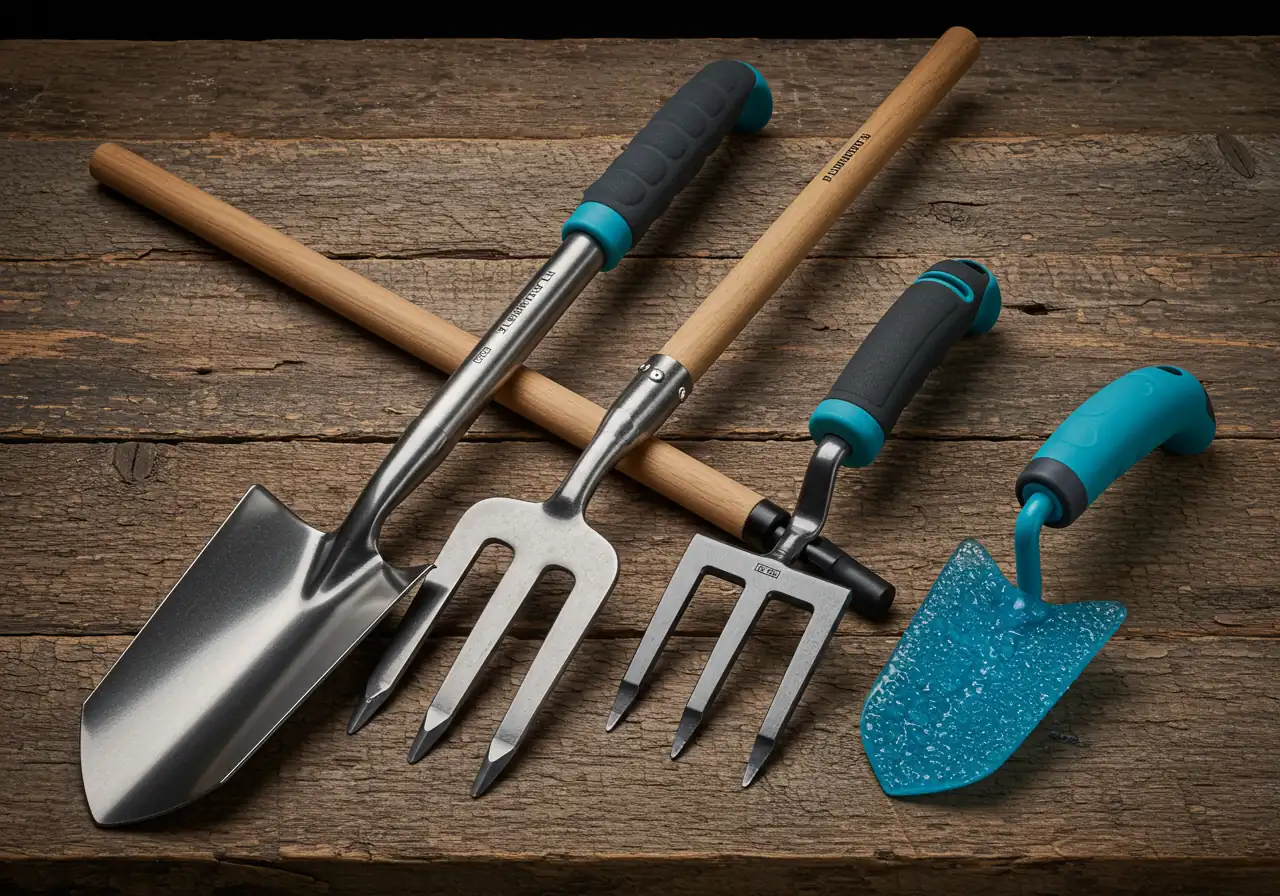
Alright, we've established that ergonomic tools are basically superheroes for your body when battling tough soil. But which caped crusaders should be in *your* specific gardening arsenal, especially when you're dealing with the notorious clay we often find here in Ottawa, from Barrhaven to right here in Russell? Equipping yourself correctly can turn a dreaded chore into... well, maybe not a walk in the park, but definitely less of a wrestling match! Investing wisely in your tools makes landscaping and gardening tasks far more enjoyable. See examples in our gallery.
Let's look at the MVPs (Most Valuable Planting tools) for clay soil:
- The Mighty Ergonomic Shovel/Spade: Forget those flimsy, standard shovels that buckle under pressure. For clay, you want something robust.
- Ergo Features: Look for shovels with a *pointed* or slightly *serrated* blade edge – these slice through dense clay more easily than a flat edge. A *wider foot platform* gives you more power when pushing down with your leg (use those strong leg muscles!). Handles are key: *longer shafts* reduce bending, while *D-shaped or O-shaped grips* provide better control and leverage with less wrist strain. Some even have slightly *curved shafts* to further minimize back bending.
- Clay Advantage: Better penetration, less back strain, more efficient digging for planting holes or turning soil amendments.
- The Indispensable Digging Fork: Sometimes, a fork is mightier than the shovel! Especially when breaking up compacted clay before planting or amending.
- Ergo Features: Seek out forks with *strong, sharp tines* (square or triangular ones are often tougher than flat ones). Again, *handle length* matched to your height is crucial, as is a comfortable, secure grip (often padded or textured). A sturdy connection between the head and shaft prevents annoying wobbles or breaks.
- Clay Advantage: Forks lift and loosen compacted soil more effectively than a shovel, improving aeration and drainage without requiring quite as much brute force to penetrate initially. They are great for incorporating compost.
- Handy Heroes: Ergonomic Trowels & Cultivators: For smaller jobs like planting annuals or weeding between existing plants, don't skimp on comfort here either.
- Ergo Features: *Contoured or gel-padded handles* significantly reduce hand fatigue and pressure points. Look for *one-piece designs* (where the metal extends into the handle) or *securely attached heads* made of *stainless steel or strong aluminum* – cheap ones bend or break easily in clay. Some cultivators have uniquely angled tines for better leverage.
- Clay Advantage: Less hand cramping, more targeted digging power without damaging nearby plants, tools last longer. These make detailed regular garden maintenance tasks much more pleasant.
- The Broadfork (Heavy Hitter): If you're serious about improving larger clay soil areas without a rototiller, consider a broadfork. It looks like a giant fork with two handles.
- Ergo Features: Allows you to use your body weight and leg strength to push the tines deep into the soil, then rock back using the long handles for leverage to loosen it without completely turning it over (preserving soil structure).
- Clay Advantage: Deeply aerates compacted clay with less back strain than traditional double-digging. It’s a serious tool for a serious soil transformation, maybe something needed before undertaking a comprehensive Marionville yard cleanup service.
Beyond the Tool: Remember, even with the best ergonomic tools, *technique matters*. Bend your knees, keep your back straight, lift with your legs, and take breaks! Also, invest in quality. Good tools cost more upfront but last longer and perform better, saving you money and frustration down the road. Trying to manage heavy clay might make you consider professional help for larger projects; you can always provide feedback on our service estimates if you explore that route. The effort involved in significantly amending large areas of clay can sometimes feel like it requires a Marionville property cleanup service level of work! Improving soil health benefits everything, often complementing your lawn care routine by improving drainage across the whole yard. See our material options at material selection.
Choosing the right ergonomic tools won't magically turn your Russell clay into fluffy loam overnight, but they *will* make the journey significantly easier on your body, letting you focus more on the joy of gardening.
Comparing Soil Amendment Techniques
Using Compost
Adding compost is the gold standard for improving clay soil. It introduces organic matter, which helps separate clay particles, improving aeration and drainage. Apply a 2-4 inch layer and gently mix it into the top 6-8 inches using an ergonomic fork. Best done in fall.
Benefits: Improves soil structure, adds nutrients, boosts microbial life.
Effort: Moderate, especially initially. Requires sourcing/making compost and mixing it in.
Cover Cropping
Planting specific crops (like rye, clover, or buckwheat) and then turning them into the soil adds organic matter and can help break up compaction with their root systems. Often planted in fall to protect soil over winter.
Benefits: Adds organic matter, prevents erosion, suppresses weeds, can fix nitrogen (legumes).
Effort: Low planting effort, moderate effort to turn crops in before they set seed. Requires planning.
Raised Beds
Building garden beds above the existing ground and filling them with imported topsoil/compost mix completely bypasses the heavy clay issue for the plants within the bed.
Benefits: Instant good soil, excellent drainage, easier access (less bending).
Effort: High initial effort and cost for materials and soil. Low ongoing soil amendment effort within the bed.
This is a great option if you're considering a new garden installation.
Soil CPR: Resuscitating Clay the Ergonomic (and Eco-Friendly) Way
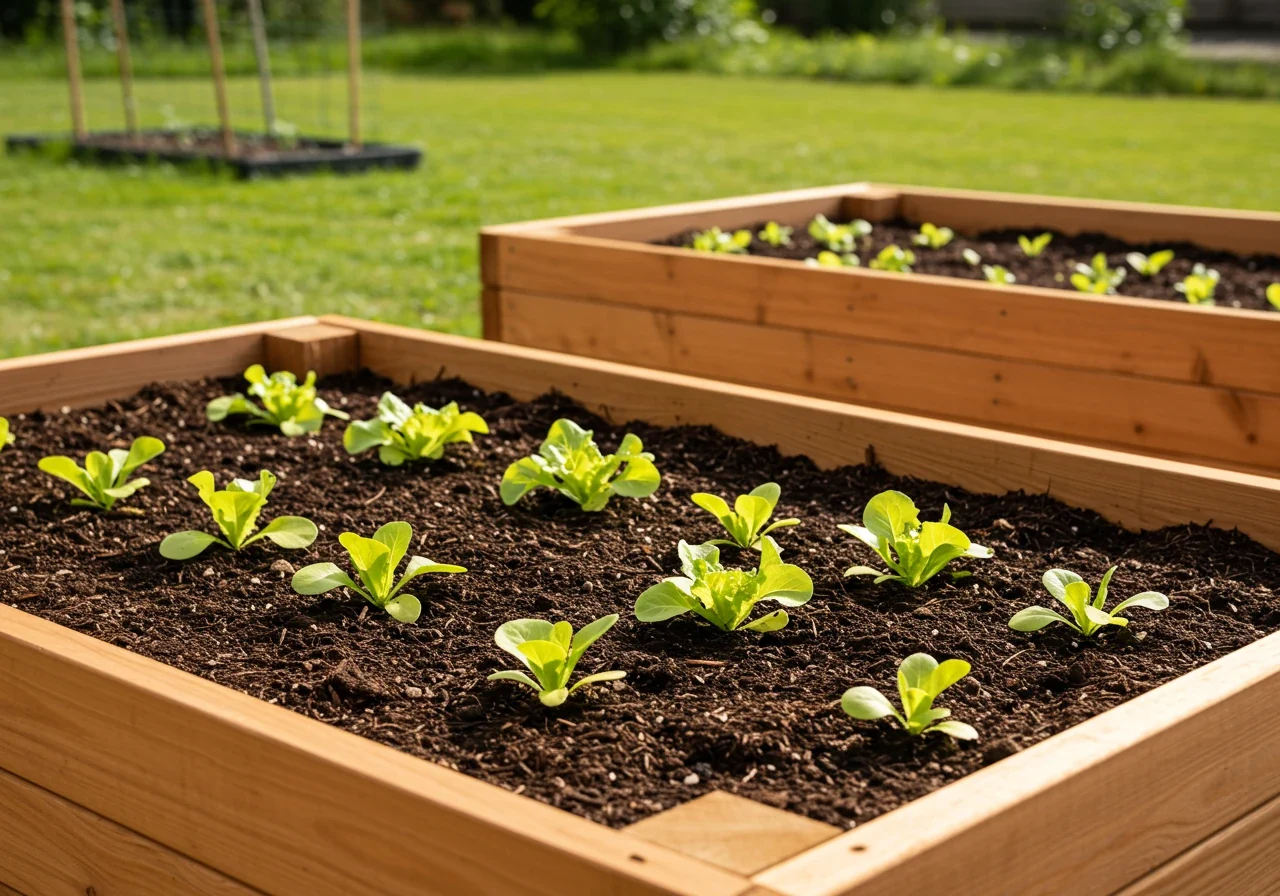
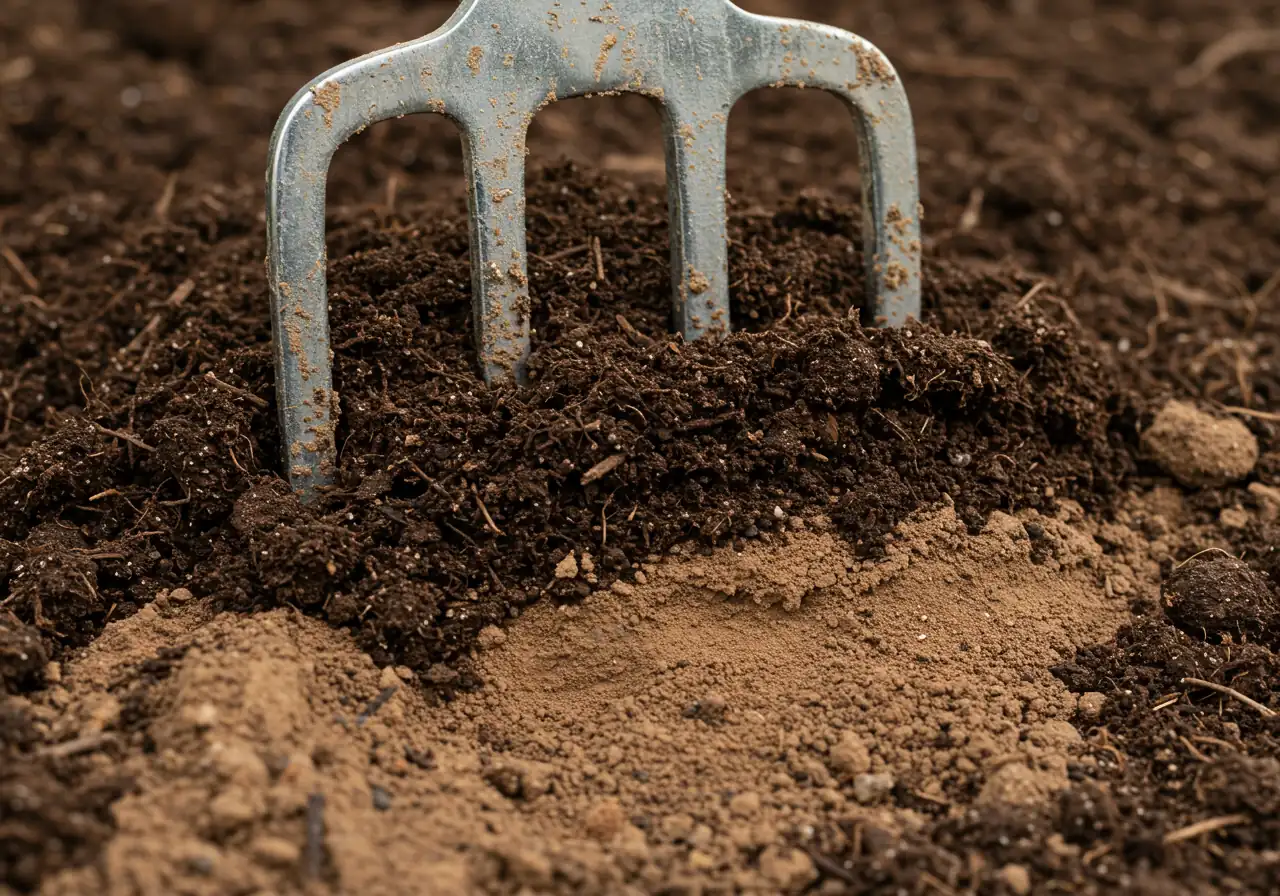
Okay, so you've got your ergonomic arsenal ready, and you understand why our local Ottawa clay can be such a diva. Now for the main event: actually improving that soil without sending yourself to the chiropractor! Think of this as performing CPR – Clay Performance Resuscitation. The hero of this story? *Organic matter*. It’s the key ingredient to bringing heavy clay back to life, making it more workable and plant-friendly. And the best part? We can do it ergonomically and eco-consciously.
Why Organic Matter is Your Clay Soil's Best Friend
Adding things like compost, aged manure, or leaf mold works wonders on clay. Imagine those tiny, packed clay particles. Organic matter acts like tiny wedges, gently prying them apart. This creates small air pockets, improving *aeration* (so roots can breathe!) and *drainage* (so water doesn't just sit there). It also encourages beneficial soil microbes and earthworms – nature’s little soil builders. Plus, using compost (especially homemade) is a fantastic eco-friendly choice, turning kitchen scraps and yard waste into black gold for your *gardening* efforts. Check out resources like the City of Ottawa's Green Bin program for composting tips.
Amending Clay: Step-by-Step (The Body-Friendly Way)
Ready to give your soil some love? Here’s how, using those ergonomic tools:
- Pick Your Moment: Timing is everything. *Fall* is the absolute best time for major *soil amendment*. Spread your organic matter, incorporate it lightly, and let Ottawa’s winter freeze-thaw cycles work their magic, helping to break up clumps. *Spring* is your second-best option, but *never* work clay soil when it’s wet and sticky – you’ll just compact it further, making things worse! Wait until it’s moist but crumbly.
- Clear the Decks: Remove existing weeds, turf, or debris from the area you want to amend. This ensures your precious organic matter contacts the soil directly. For larger areas needing significant clearing, the effort can be substantial, almost like needing a thorough dedicated Marionville yard cleanup service.
- Loosen Up (Gently!): Grab your ergonomic digging fork or broadfork. Instead of aggressive turning or tilling (which can harm soil structure), gently push the fork into the top 15-20 cm (6-8 inches) and rock it back slightly to loosen the compacted clay. Your back will thank you for using the leverage of the longer handles and your leg muscles!
- Spread the Goodness: Apply a generous layer – we’re talking 5-10 cm (2-4 inches) – of compost or other well-rotted organic matter over the loosened soil. Don't skimp!
- Mix it Lightly: Use your ergonomic fork or spade to gently mix the organic matter into the top layer of clay. You aren't aiming for a perfectly blended cake mix, just incorporating it into the loosened soil. Minimal bending, maximum leverage – that’s the ergo-advantage. Remember, when hiring help for big projects, clarity is key, much like how reviewing service terms and conditions ensures everyone is on the same page.
- Top it Off (Optional but Recommended): Adding a layer of mulch (like shredded bark or leaves) helps retain moisture and suppress weeds. Keeping the soil healthy makes ongoing tasks easier, perhaps simplifying future work compared to a full focused Marionville garden clean up service.
The Raised Bed Escape Hatch
Feeling overwhelmed by a large expanse of heavy clay, maybe in newer developments around Barrhaven or Nepean where soil compaction can be severe? Consider raised beds! Essentially, you build frames (wood, stone, etc.) on top of the existing ground and fill them with a good quality soil mix. It’s an upfront investment but lets you bypass the native clay almost entirely, giving you instant, perfect soil for your plants.
Improving clay soil is a marathon, not a sprint. Adding organic matter consistently each year will gradually transform its texture. It takes effort, but using ergonomic tools makes the *landscaping* process far less punishing. If the scale of your soil challenge feels too big, remember professional help is available. Tackling a whole yard's worth of heavy clay amendment can feel like a project needing an Ottawa property cleanup service level of intervention, so don't hesitate to book an estimate for professional help if needed. Your back (and your future plants) will thank you! Existing clients can use the customer portal.
Visualizing Soil Improvement Effort
Note: Chart shows relative *initial* physical effort. Ergonomic tools reduce effort across manual methods.
Smarter Planting & Upkeep: Ergonomic Techniques in Clay
Okay, you've got the right tools, and you've started improving your soil. Now let's tackle the everyday *gardening* tasks in that notorious clay without needing a week of recovery! Here’s how to plant, weed, water, and mulch smarter, not harder, keeping your body happy while you beautify your Ottawa-area yard:
- Planting Power Moves: Digging planting holes in clay can feel like excavating concrete. Use that ergonomic *pointed spade* – its shape cuts through dense soil more easily. Instead of just bending your back, stand with feet shoulder-width apart, place one foot firmly on the shovel's wider step, and use your leg strength to push down. Keep your back as straight as possible. Dig the hole wider than deep – clay makes it tough for roots to spread sideways. Giving roots room to roam is key for successful planting, especially if you're investing in a beautiful new garden installation. And if you're tackling a *really* big planting project, remember we handle your project details carefully, as outlined in our Privacy Policy.
- Weed Without Whining: Pesky weeds love clay too, unfortunately. For surface weeds, a *long-handled ergonomic hoe* lets you skim the soil surface while standing upright – goodbye back strain! For deeper taproots, wait until the soil is slightly moist (but not soggy!), then use an ergonomic *hand weeder* with a comfortable grip or a *stand-up weeder* that grabs the root. This targeted approach is much easier than trying to yank weeds from bone-dry or sticky-wet clay. Tackling a jungle? Sometimes a large-scale weed invasion feels like it needs a professional touch, similar to a full Metcalf property cleanup service.
- Water Wisely: Clay holds water, but it absorbs it slowly. Instead of quick sprinkles, water deeply and less often. An *ergonomic watering wand* with an adjustable head is your friend here. It extends your reach, preventing awkward bending, and allows you to deliver water gently right at the base of plants, reducing runoff. Aim for slow, deep soaking so water penetrates rather than pooling. For local water conservation info, check the Rideau Valley Conservation Authority.
- Mulching Magic: Mulching is a superhero move in Ottawa's climate! Applying a 5-7 cm (2-3 inch) layer of organic mulch (like shredded bark or leaves) helps clay soil retain moisture during our hot summers and insulates roots during cold winters. Use an *ergonomic shovel or fork* to spread it evenly, keeping it away from direct contact with plant stems to prevent rot. This simple, eco-friendly step also suppresses weeds (less whining!) and improves soil structure over time as it breaks down. It's a key part of finishing touches like professional mulching and edging services. If spreading mulch over a huge area feels overwhelming, it might approach the scale of needing an Ottawa yard cleanup service to manage the workload!
By combining these techniques with your ergonomic tools, you’ll find *landscaping* and gardening tasks in clay soil become much more manageable and enjoyable. Your back – and your beautiful plants – will thank you!
Quick Guide: Ergonomic Tool Features for Clay
| Tool Type | Key Ergonomic Feature | Benefit for Clay Soil |
|---|---|---|
| Pointed Shovel/Spade | Pointed/Serrated Blade, Long Handle, Wide Foot Step | Easier penetration, less bending, better leverage |
| Digging Fork | Strong Tines, Long Handle, Comfortable Grip | Efficiently loosens compacted soil, less strain |
| Hand Trowel/Cultivator | Contoured/Gel Grip, One-Piece Design | Reduces hand fatigue, durable for tough soil |
| Broadfork | Dual Long Handles, Wide Tine Head | Deep aeration using body weight, minimal back strain |
| Long-Handled Hoe | Extended Shaft Length | Allows weeding while standing upright |
Easy Ergonomic Wins for Your Russell Garden
Gardening in Russell's clay soil doesn't have to be a pain in the back! Save yourself some strain with these quick ergonomic tips:
- Long Handles are Your Friends: Choose shovels, forks, and hoes with longer handles that fit *your* height. Standing straighter reduces back strain dramatically.
- Leverage is Key: Use ergonomic tools with pointed blades, wider foot steps on shovels, or angled heads. Let the tool do more of the work!
- Amend Smarter: Mix in compost in the fall or spring (when soil isn't soggy!) using an ergonomic fork. Good prep makes everything easier, whether planning a beautiful new garden installation or improving drainage near areas getting professional sod installation.
- Lift with Your Legs: Bend those knees! Keep your back straight when lifting soil, plants, or mulch bags.
- Weed Wisely: Use long-handled or stand-up weeders *before* weeds take over. Tackling a major weed problem might even need a thorough property clean up.
- Take Breaks: Seriously! Short, frequent breaks prevent fatigue and potential injury. If the job feels too big, don't hesitate to contact us for landscaping assistance.
Timeline for Tackling Clay Soil
Late Summer / Early Fall: Assess & Plan
Perform the ribbon test. Observe drainage patterns. Decide on amendment strategy (compost, cover crop, raised beds). Order materials like compost or wood for beds.
Mid-Fall: Amend or Plant Cover Crop
If amending, clear beds, loosen soil gently, add compost/organic matter. If using cover crops, plant seeds according to recommendations. Mulch beds for winter protection.
Winter: Let Nature Work
Allow freeze-thaw cycles to help break up soil structure. Plan spring planting. Research clay-tolerant plants. Maybe build raised beds if weather permits.
Spring: Prepare & Plant
Wait until soil is workable (not wet). Turn in cover crops (if used) or lightly incorporate any remaining surface compost. Plant your chosen species, using ergonomic techniques!
Ongoing: Maintain & Observe
Mulch consistently. Water deeply. Top-dress with compost annually. Observe plant health and soil texture improvements over time. Consider services like Ottawa Garden Clean Up for seasonal help.
FAQs: Your Ottawa Clay Soil & Ergonomic Gardening Questions
Great question! Many local garden centers and larger hardware stores in and around Ottawa carry ergonomic tool lines. Look for brands known for quality and comfort features. Don't be shy about picking them up – feel the grip, check the weight. It’s worth comparing. Reputable local resources like the Master Gardeners of Ottawa-Carleton might also offer advice. If you're unsure, sometimes seeing the results of good tools inspires action – check out some amazing Ottawa garden transformations achieved with the right approach!
You have options! Tough beauties like Hostas, Daylilies, Coneflowers (Echinacea), Black-Eyed Susans (Rudbeckia), and many ornamental grasses often tolerate clay well once established. Consider native species too – they're adapted to our local conditions! Just remember, even tough plants appreciate *some* soil improvement like adding compost. Proper planting depth and location matter, something often addressed during a professional Metcalf yard cleanup service when assessing plant health.
Mulch is your best friend! A thick layer (5-7 cm) of organic mulch insulates the soil, reducing the severity of freezing and thawing, which minimizes frost heave. Planting cover crops in fall can also help stabilize soil. For significant shifting or winter damage cleanup, sometimes bringing in help like an Ottawa yard cleanup service is the easiest way to reset for spring.
Think of it as an investment in *your* comfort and gardening longevity! Even for occasional tasks, reducing strain prevents aches and makes the experience more enjoyable. Cheaper tools often bend or break in heavy Ottawa clay, leading to frustration and replacements. Quality ergonomic tools last longer and genuinely make digging and weeding easier on your body. Your back will definitely thank you for making the switch!
Add organic matter! The easiest first step is to simply spread a layer of compost or well-rotted manure (about 5 cm or 2 inches thick) over the surface of your garden beds. You don't even need to dig it in right away, especially if doing it in the fall. Let the worms and weather start the process. Just layering it on top helps improve soil structure over time. For professional assistance, consider our Ottawa garden clean up service.
Conclusion: Enjoy Your Russell Garden, Minus the Aches and Pains
So there you have it! Gardening in Russell’s infamous clay soil doesn’t have to feel like a punishment followed by a week of groaning every time you stand up. By choosing *ergonomic tools* designed for comfort and leverage, and using *smarter techniques* for digging, planting, and amending, you really can tame that tough turf without torturing your joints. Remember, adding organic matter like compost is key to gradually improving soil structure, and working the soil when it's *not* soaking wet or rock hard saves a world of effort. It's all about working smarter, not harder, turning potential *landscaping* struggles into satisfying successes.
Think of it: more time smelling the roses (or the peonies, daylilies – whatever thrives in your improved soil!) and less time reaching for the heating pad. These strategies help you focus on the joy of *gardening* itself, creating a beautiful outdoor space you can actually enjoy, pain-free. Check out our Google My Business page for reviews!
Ready to transform that challenging clay patch into your dream garden oasis? If the thought of tackling a big soil amendment job or a full *landscaping* design in Russell, Kars, or Vernon still feels overwhelming, let's talk! Book a consultation today and let our expertise ease the load. We also serve nearby areas like Marionville and Metcalfe.
Want more localized tips and seasonal advice for keeping your Ottawa-area garden looking its best, whether you're in Kenmore or closer to the city? **Sign up for our free gardening newsletter** (Link would go here if available) for helpful insights delivered straight to your inbox. Happy gardening – your back will thank you!
